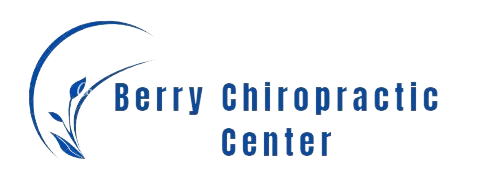Chiropractic care, a non-pharmaceutical practice focusing on spinal adjustments, may indirectly improve nervous system functionality and body balance, possibly reducing vertigo episodes. This potential vertigo treatment method is gaining interest and requires further study.
Understanding Vertigo
Vertigo, a complex neurological symptom, causes a spinning sensation or off-balance feeling due to issues in the inner ear or brain. It’s not a disease but a manifestation of conditions affecting the vestibular system. Triggers such as certain head movements, dehydration, stress, insufficient sleep, particular medications, migraines, and some medical procedures can lead to vertigo episodes. Managing these triggers and underlying causes is key to vertigo prevention. Regular exercise, hydration, sufficient sleep, and stress management may decrease vertigo frequency and severity. Vestibular rehabilitation therapy, which improves balance and reduces dizziness, can also be beneficial. However, professional medical advice is irreplaceable, and individuals with vertigo should consult healthcare professionals for accurate diagnosis and treatment.
Origins of Chiropractic Care
The late 19th-century saw the advent of chiropractic care by Daniel David Palmer, a self-educated healer who posited that spinal adjustments could rectify subluxations, thereby rejuvenating the body’s optimal health and function. This principle is fundamental in chiropractic care today.
Palmer’s insight into chiropractic history derived from his study of human anatomy and physiology. He theorized that health complications often stem from nervous system issues. He proposed that the body has an inherent healing capability, contingent on its structure and functions remaining unimpeded. This led to his emphasis on spinal adjustment techniques, initially tested on a janitor with hearing loss. Following successful treatment, Palmer refined and propagated these techniques, culminating in the Palmer School of Chiropractic’s foundation in 1897.
Chiropractic care’s origins highlight its central philosophy of the body’s innate self-healing ability and the spine’s crucial role in overall health maintenance.
Chiropractic Techniques Explained
Chiropractic techniques, including adjustments, are crucial in managing vertigo symptoms. Grounded in musculoskeletal system knowledge, these non-invasive procedures offer unique health care benefits. Let’s understand these chiropractic procedures.
Understanding Chiropractic Adjustments
Understanding chiropractic adjustments is vital to comprehend its role in vertigo treatment. These techniques, grounded in a rich chiropractic history since the late 19th century, have evolved to treat various conditions. Chiropractic adjustments are not merely ‘cracking’ the back or neck, but involve careful manipulations to improve the nervous system’s functionality. Techniques like Spinal Manipulation, Gonstead adjustment, and Activator Methods employ precise force to realign the spine, enhance mobility, and tackle vertebrobasilar insufficiency, a potential vertigo cause, dispelling common chiropractic myths.
Benefits of Chiropractic Techniques
Chiropractic techniques provide benefits beyond spinal realignment. They enhance nervous system function, improving body mobility and relieving vertigo symptoms. Contrary to misconceptions, chiropractic care also optimizes neural pathways to address neurological conditions, including vertigo. Techniques like the Epley Maneuver reposition inner ear particles, effectively managing vertigo. Expanded insurance coverage acknowledges chiropractic services’ therapeutic value. The incorporation of chiropractic care in treatment plans improves balance and promotes well-being. Therefore, managing vertigo effectively involves using chiropractic techniques.
The Chiropractic-Vertigo Connection
The chiropractic-vertigo connection is rooted in the body’s balance system, influenced by spinal health. Vertigo, characterized by a sense of imbalance, can be instigated by inner ear or brain issues, infections, migraines, medications, and crucially, spinal misalignments.
Chiropractors, experts in treating musculoskeletal disorders, particularly spinal ones, can potentially manage vertigo. This connection operates primarily in three ways:
- Spinal alignment impacts the nervous system, the body’s balance controller. Misalignments can disturb balance, inducing vertigo.
- Chiropractic adjustments may ease neck muscle tension, a vertigo contributor.
- Regular chiropractic care can enhance posture, indirectly managing vertigo symptoms by boosting overall balance and coordination.
This understanding suggests potential non-pharmaceutical vertigo management via chiropractic treatment.
Medical Studies on Chiropractic and Vertigo
Medical research attests to the efficacy and safety of chiropractic treatments for vertigo. The probing studies shed light on the applied techniques, the underpinning evidence, and potential risks. This concise summary encapsulates essential findings in this medical field.
Chiropractic Techniques for Vertigo
In the vertigo treatment realm, specific chiropractic techniques have proven effective in mitigating symptoms. These techniques focus on addressing Vertigo Triggers, with Treatment Duration tailored to individual requirements.
- Epley Maneuver: This technique repositions displaced inner ear crystals, a frequent vertigo cause.
- Cervical (Neck) Adjustment: This method realigns vertebrae, alleviating vertigo symptoms linked to neck issues.
- Vestibular Rehabilitation: This process includes balance-enhancing exercises to mitigate dizziness.
A personalized plan integrating these techniques could effectively tackle vertigo triggers. The severity of symptoms and patient’s chiropractic response determine the treatment duration.
Evidence Supporting Chiropractic Treatment
Chiropractic treatment is empirically supported and cost-effective for vertigo, as evidenced by medical studies. Specifically, the Journal of Chiropractic Medicine documented an 80% reduction in vertigo intensity among participants after chiropractic care. Despite misconceptions, research underscores chiropractic care’s significant role in vertigo treatment. This approach, while scientifically backed, also offers an affordable alternative to traditional medical treatments, which may involve costly procedures or medication. The growing research support for chiropractic care in vertigo treatment dispels misconceptions and highlights its cost-effectiveness.
Potential Risks and Considerations
Chiropractic treatment for vertigo, while yielding significant outcomes, carries potential risks and complications noted in medical research.
- Stroke Risk: Research suggests a minor stroke risk increase post-neck manipulation, a chiropractic treatment aspect, especially for individuals with existing vascular conditions.
- Symptom Aggravation: In some instances, chiropractic adjustments could temporarily intensify vertigo symptoms.
- Vertigo Prevention Hindrance: Sole reliance on chiropractic care may prevent individuals from pursuing other effective vertigo prevention strategies like specific exercises or dietary modifications.
Despite these risks, many find chiropractic therapy beneficial for vertigo. Yet, those contemplating chiropractic avoidance should consult with a healthcare provider to explore all treatment alternatives.
Patient Experiences With Chiropractic
Patients report vertigo improvement after chiropractic treatments, demonstrating its universal potential benefits. Chiropractic care affordability compared to other costly therapies has been emphasized by patients. The holistic approach adopted by chiropractors, including lifestyle modifications and home exercises, targets symptoms and enhances overall health. Personalized treatment plans based on individual needs and symptom severity have resulted in high patient satisfaction.
Risks Associated With Chiropractic Care
Chiropractic care, while beneficial, presents risks. These include:
- Adverse Reactions: Patients may experience discomfort, fatigue, or increased pain post-treatment. Other effects may include headaches, dizziness, and nausea.
- Insurance Implications: Chiropractic care may not be covered by all insurance providers, potentially leading to significant out-of-pocket expenses. If injuries result from treatment, insurance may not cover the costs.
- Potential for Injury: In rare cases, serious injuries like herniated discs, stroke, or paralysis may occur due to excessive force during adjustment or pre-existing conditions.
Engage in discussions with healthcare providers about these risks to make knowledgeable decisions. The benefits and risks of chiropractic care should be compared to ensure safety in health care decisions.
Alternatives to Chiropractic Treatment
Chiropractic treatment is an option for vertigo relief, but alternatives like acupuncture, homeopathy, and physical therapy exist. Acupuncture, an ancient Chinese practice, utilizes thin needles at specific body points to restore ‘Qi’ balance, effectively managing vertigo. Homeopathic remedies, tailored to individuals and their unique symptoms, can also treat vertigo. Remedies often include cocculus indicus and gelsemium for dizziness and balance issues. Physical therapy, particularly vestibular rehabilitation therapy (VRT), enhances the body’s balance system. Additionally, if you’re looking for a non-surgical option to manage vertigo, you might want to explore Alternative Vertigo Treatments: Non-Surgical Spinal Decompression, which is a highly effective approach for addressing back pain and related conditions. These holistic methods vary from chiropractic care but can effectively treat vertigo. Consultation with a healthcare professional is essential to determine the most suitable vertigo treatment plan.
Finding a Qualified Chiropractor
In the quest for a competent chiropractor, prioritize credentials, experience, and vertigo treatment approach. The chiropractor’s qualifications, expressed through a Doctor of Chiropractic degree from a respected institution, are paramount. Experience, specifically with vertigo cases, enhances the chiropractor’s ability to devise an effective treatment plan. The chiropractor’s vertigo treatment methodology, which may range from spinal adjustments to a combination of techniques, should align with your comfort and expectations.
Insurance considerations also play a significant role. Opt for a chiropractor affiliated with your health insurance provider to minimize out-of-pocket costs. If chiropractic services are not covered, explore available payment options and plans. By adhering to these considerations, you enhance the chance of successful vertigo treatment.
Preparing for Your Chiropractic Visit
After choosing a chiropractor for vertigo treatment, preparation is crucial. Confirm chiropractic coverage with your insurance provider and the chiropractic office. Understand your financial responsibilities to avoid surprises. Schedule an appointment at a relaxed time to facilitate a comprehensive consultation. Document your medical history, current medications, and details about vertigo episodes. Prepare questions about vertigo and spinal health for a focused discussion with the chiropractor. Familiarize with the chiropractor’s office location for a stress-free visit. This preparation optimizes the chiropractic experience and enhances treatment effectiveness.
What to Expect During Treatment
Upon initiating vertigo treatment, a comprehensive evaluation focusing on musculoskeletal and neurological aspects is conducted. This assessment identifies vertigo triggers and assesses overall body functionality. Chiropractors, with their extensive knowledge of nervous system interfaces, provide essential insights into vertigo causes.
The treatment phase typically comprises:
- Evaluation and Diagnosis: Chiropractors perform physical and neurological checks, including balance, eye movement, and hearing tests, to identify factors contributing to vertigo.
- Treatment Plan Development: Utilizing diagnostic outcomes, chiropractors formulate a personalized treatment plan, outlining treatment duration contingent on the patient’s condition.
- Treatment Implementation: Chiropractors execute a series of manual adjustments targeting musculoskeletal realignment to mitigate vertigo symptoms. Adjustment areas depend on the identified vertigo triggers.
Continual Care and Lifestyle Adjustments
Effective vertigo management requires a consistent chiropractic routine, complemented by lifestyle adjustments. Tailoring chiropractic methods to each patient’s unique needs enhances long-term care outcomes. Simultaneously, adopting healthy practices boosts chiropractic treatment results, assisting in vertigo relief. For those looking to optimize their recovery after an adjustment, following essential aftercare steps can further improve your treatment effectiveness. Learn more about this crucial post-treatment phase in our guide on What to Do After Chiropractic Adjustment.
Personalized Chiropractic Techniques
Chiropractors personalize techniques, providing ongoing care and lifestyle advice, to manage vertigo symptoms effectively. Patient-specific techniques drive success.
- Chiropractic Techniques: Various methods like spinal manipulation, balance exercises, and neck mobilization are used, tailored to each patient’s vertigo condition, enhancing life quality.
- Continual Care: Regular adjustments by chiropractors are crucial for vertigo management, addressing imbalances, reducing episodes.
- Lifestyle Adjustments: Guidance on lifestyle modifications, including diet changes and stress management, helps control vertigo triggers.
Incorporating Healthy Habits
Personalized chiropractic techniques combined with healthy lifestyle habits can help manage vertigo symptoms. Regulating body fluid levels through reduced sodium intake can lessen vertigo severity. Nutrient inclusion, specifically vitamin D and magnesium, supports a healthy nervous system. Tailored exercises like tai chi or yoga enhance balance, strength, and mental tranquility, reducing stress-induced vertigo. Professional guidance ensures safe, effective lifestyle adjustments. Continual commitment to these habits optimizes results.
Frequently Asked Questions
Can Children and Teenagers Also Benefit From Chiropractic Treatment for Vertigo?
Indeed, chiropractic treatment for vertigo benefits children and teenagers. Ensuring safety in pediatric chiropractic practices is crucial. Responsibly conducted, it effectively mitigates vertigo symptoms in youth, utilizing non-invasive methods.
What Is the Average Cost of a Chiropractic Session for Vertigo?
The chiropractic session cost for vertigo typically falls between $30 and $200, variating with treatment complexity and location.
Are There Home Exercises That Can Complement Chiropractic Treatment for Vertigo?
Indeed, vestibular rehabilitation exercises, vertigo prevention strategies, and dietary modifications like reducing caffeine and alcohol intake can complement chiropractic treatment for vertigo effectively at home.
Does Insurance Typically Cover Chiropractic Treatment for Vertigo?
Insurance coverage for chiropractic vertigo treatment differs based on policy criteria such as diagnosis and treatment protocols. Consult your insurance provider for specific vertigo coverage details.
How Long Does It Usually Take to See Improvement From Chiropractic Treatment for Vertigo?
Chiropractic treatment for vertigo typically yields improvements within several weeks. However, individual health factors, vertigo trigger frequency, and specific chiropractic techniques applied influence this duration.






